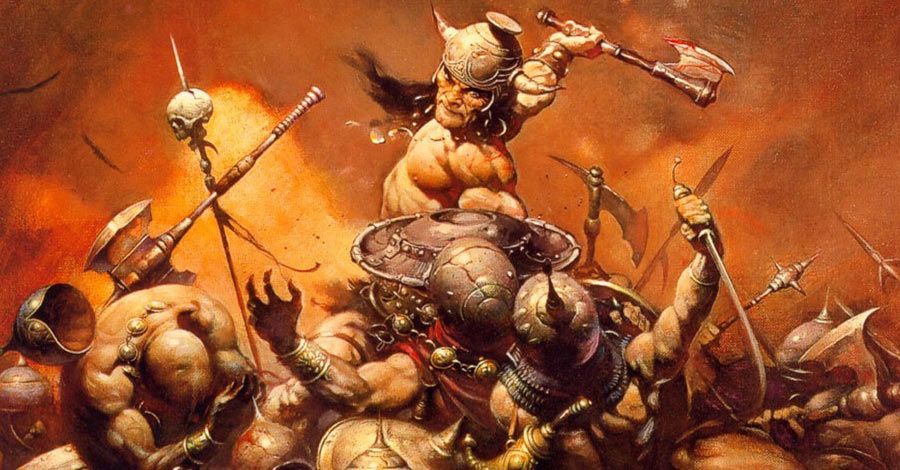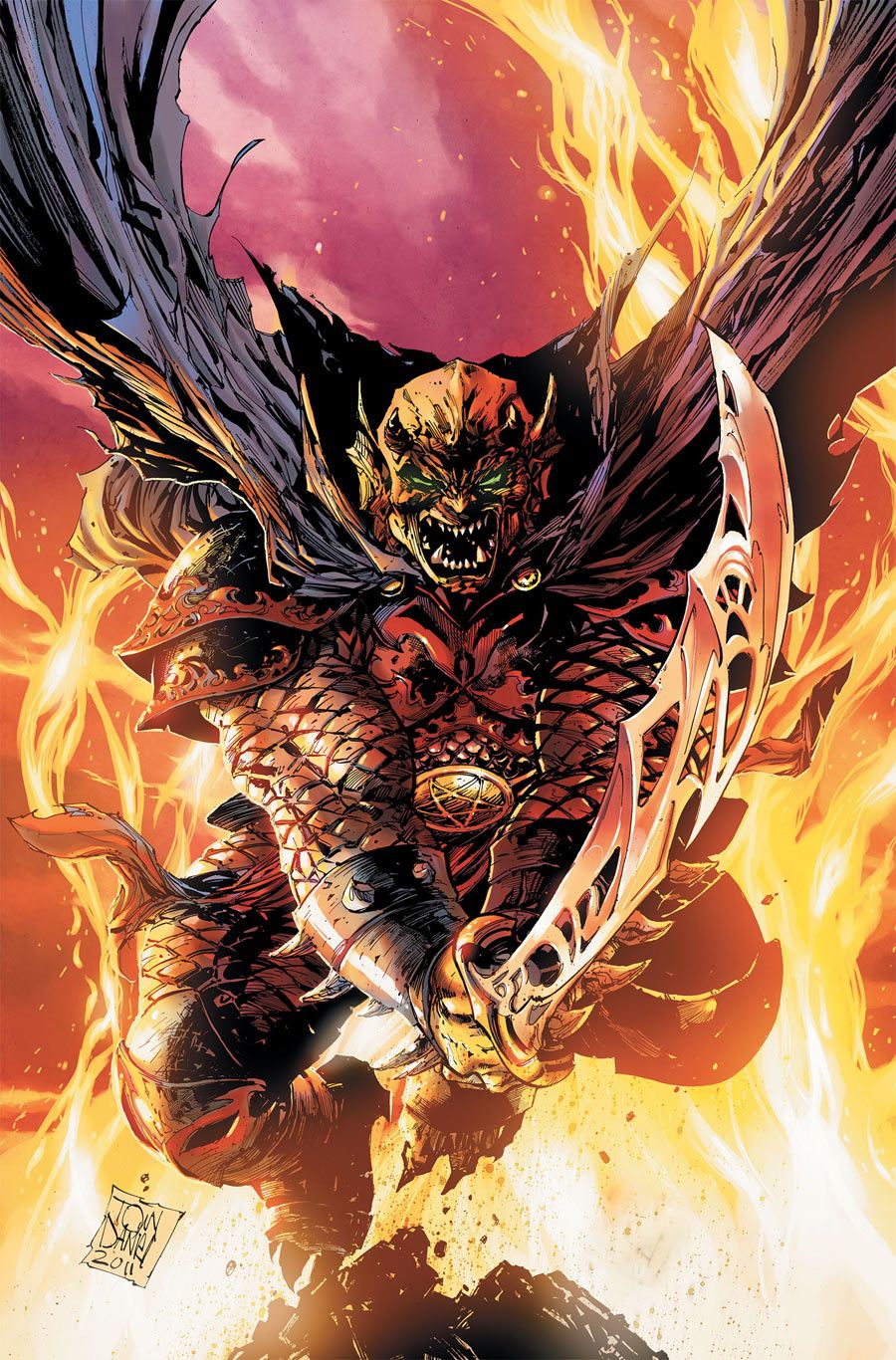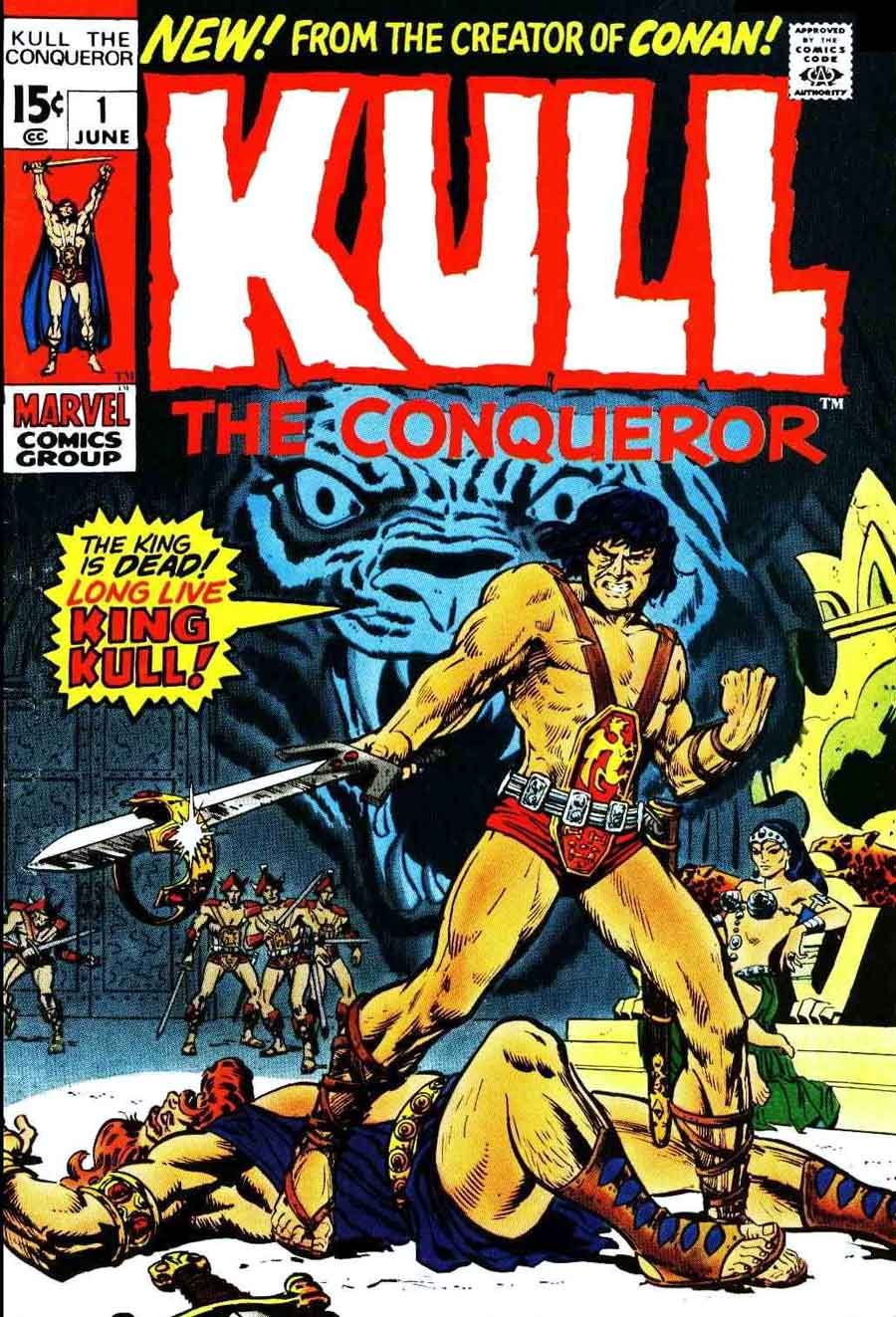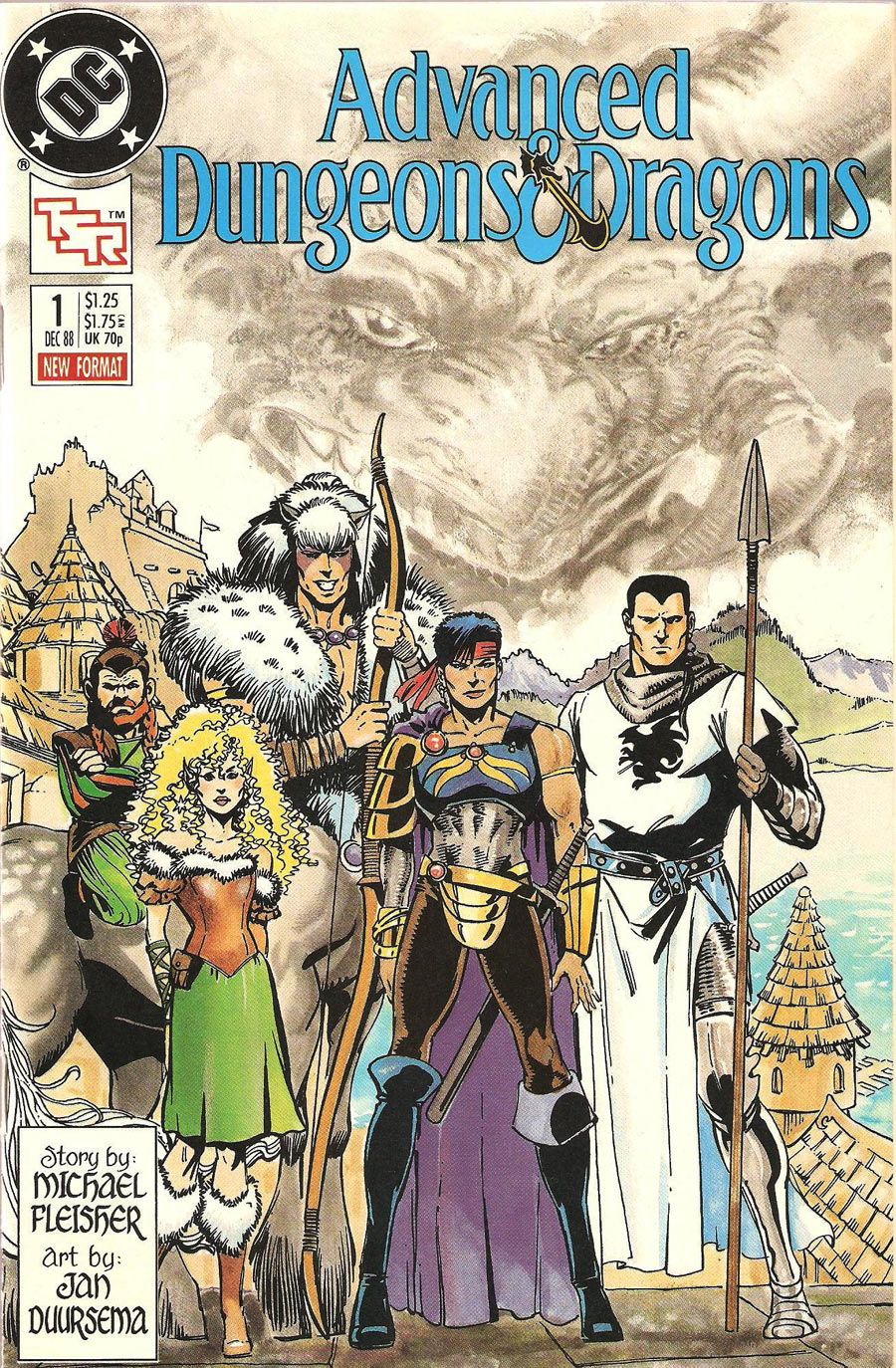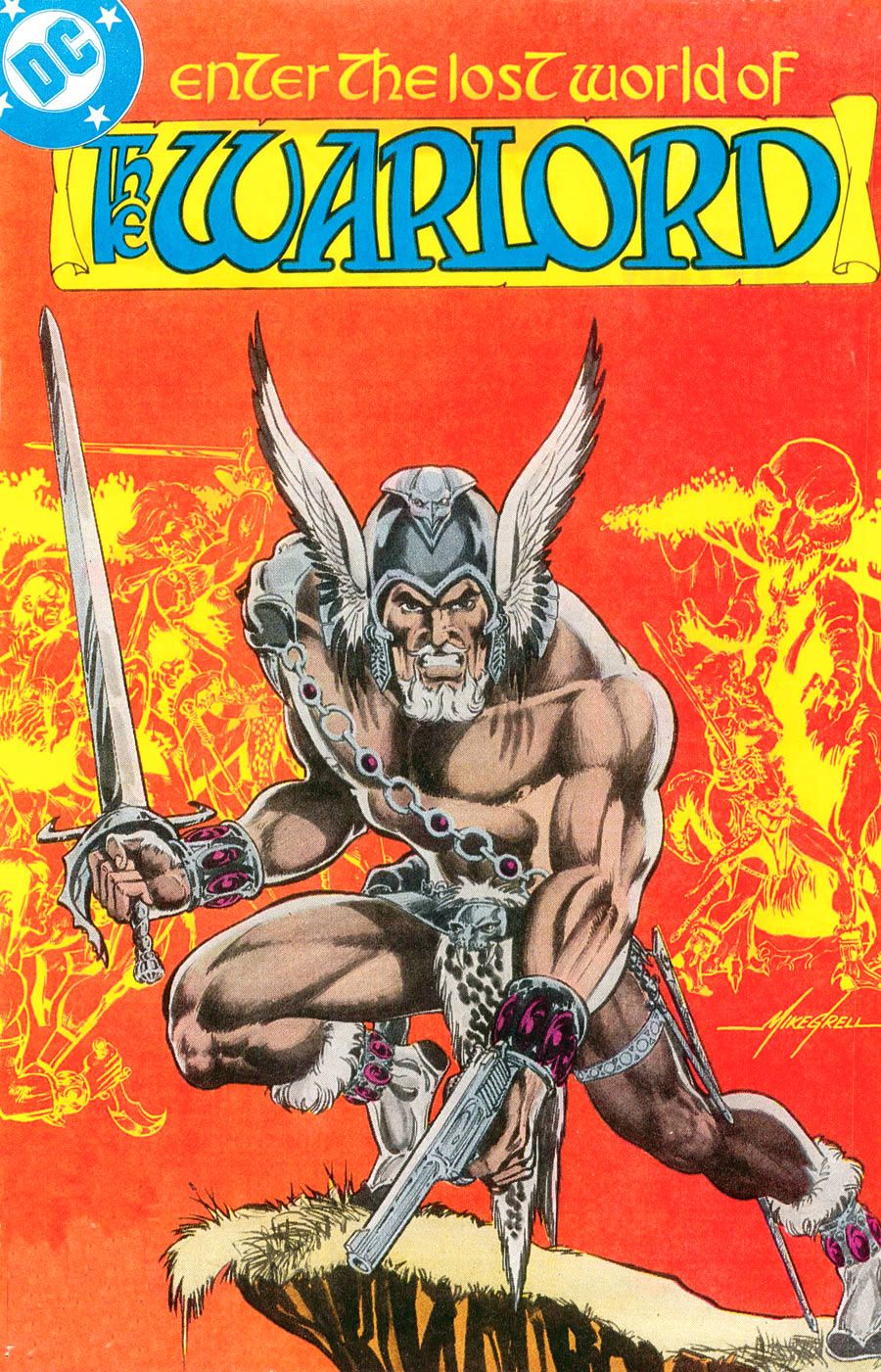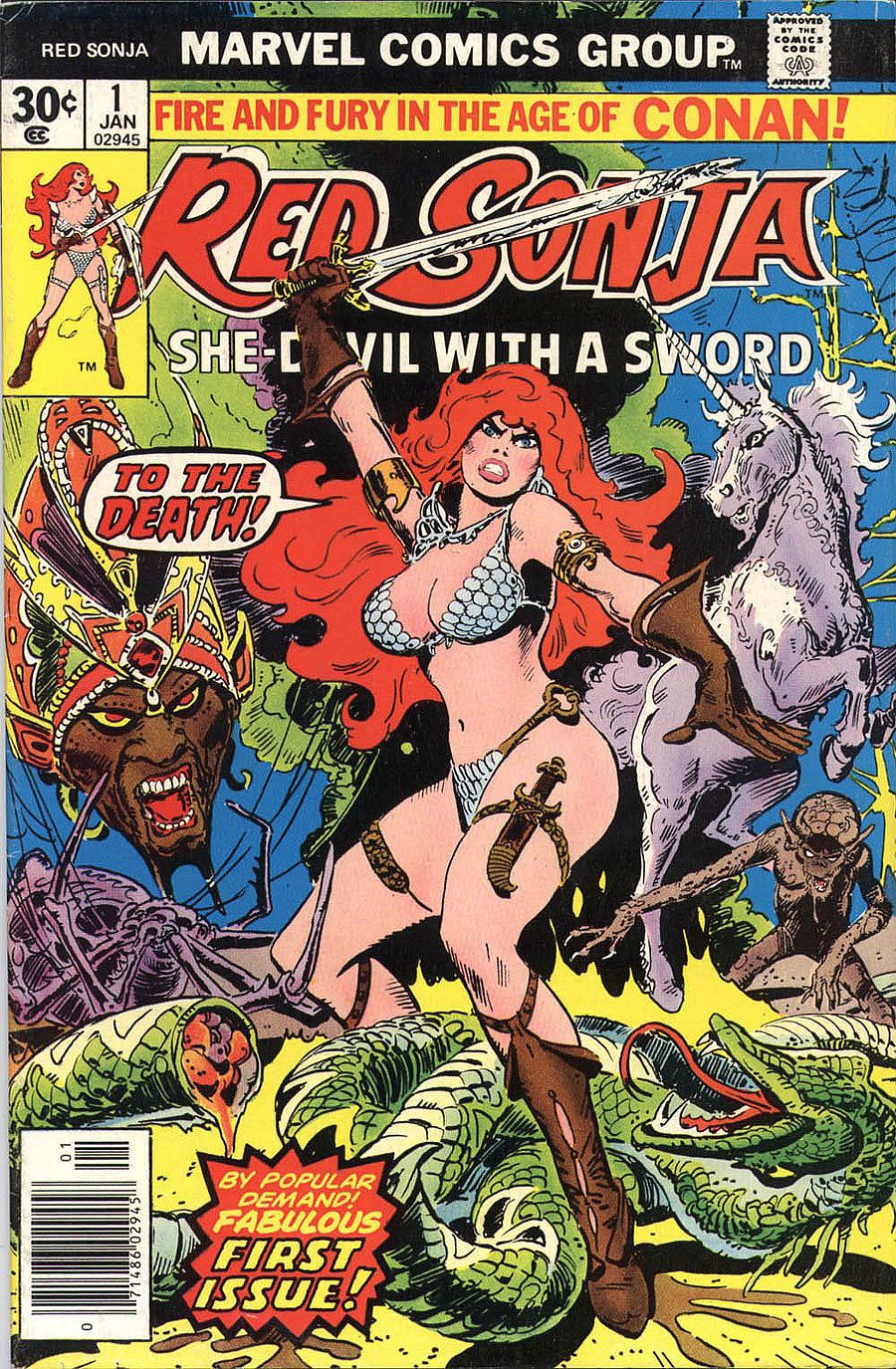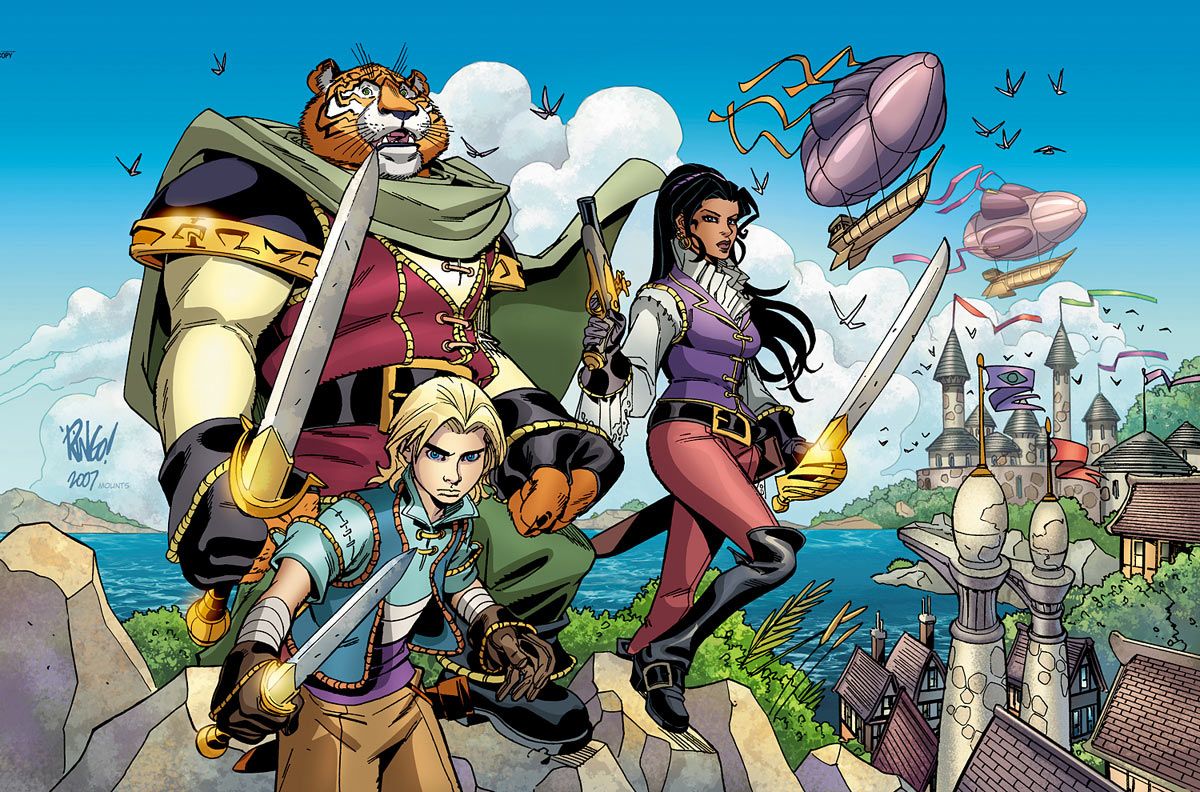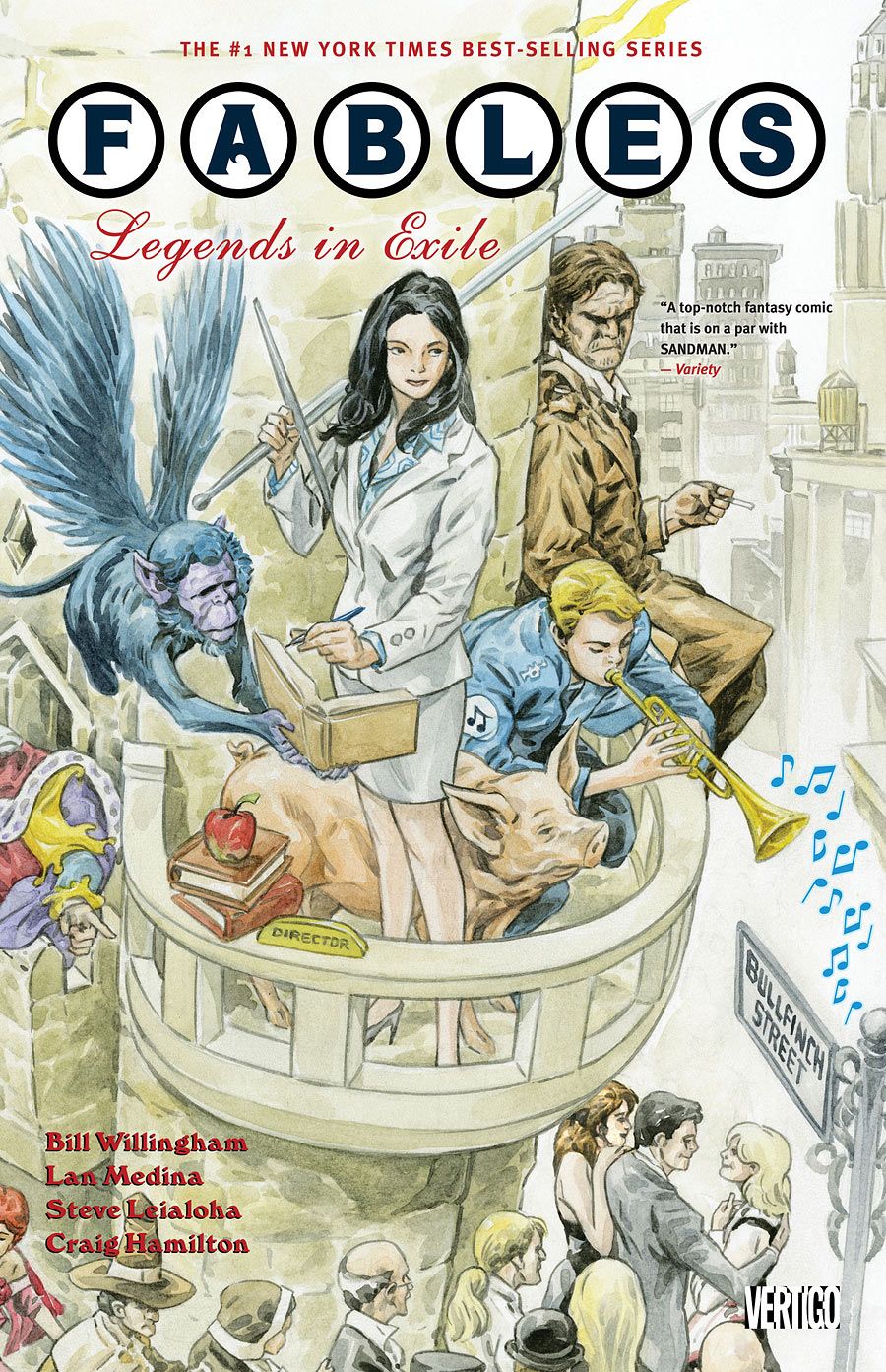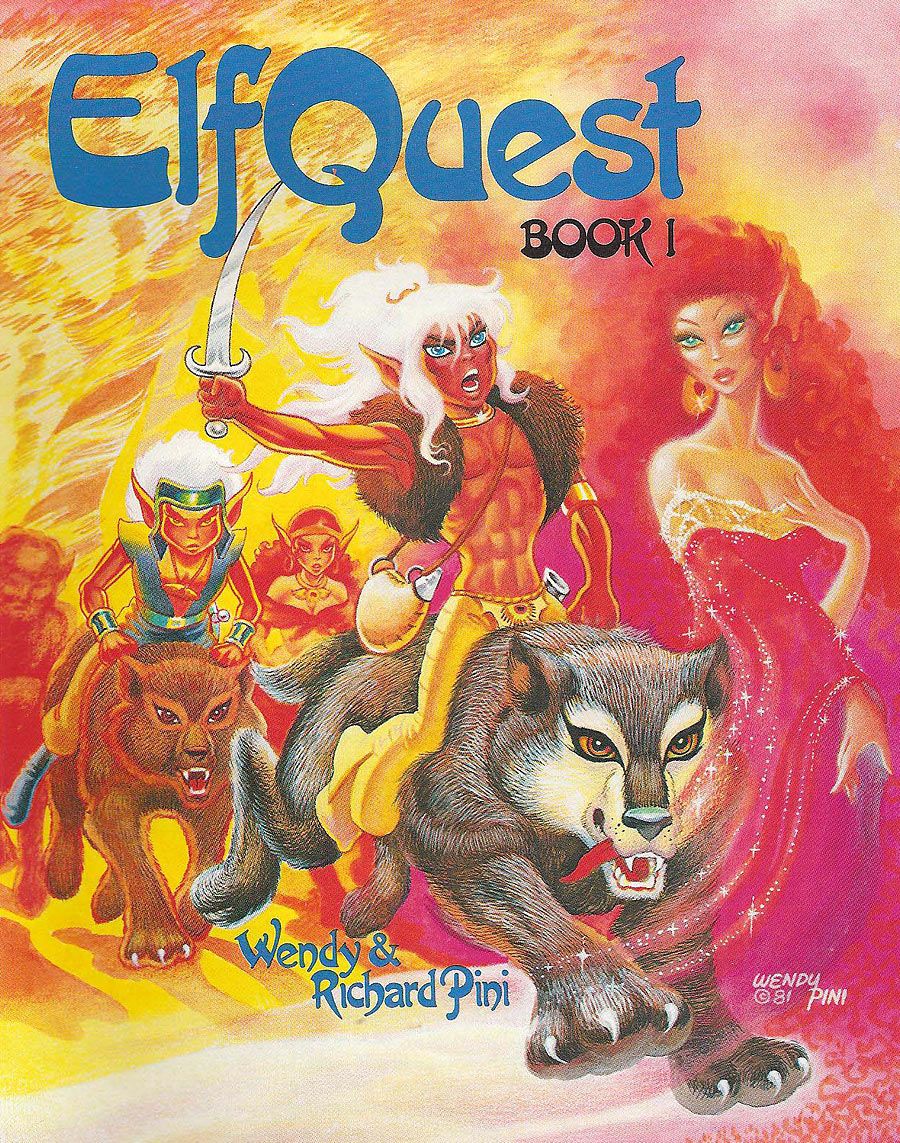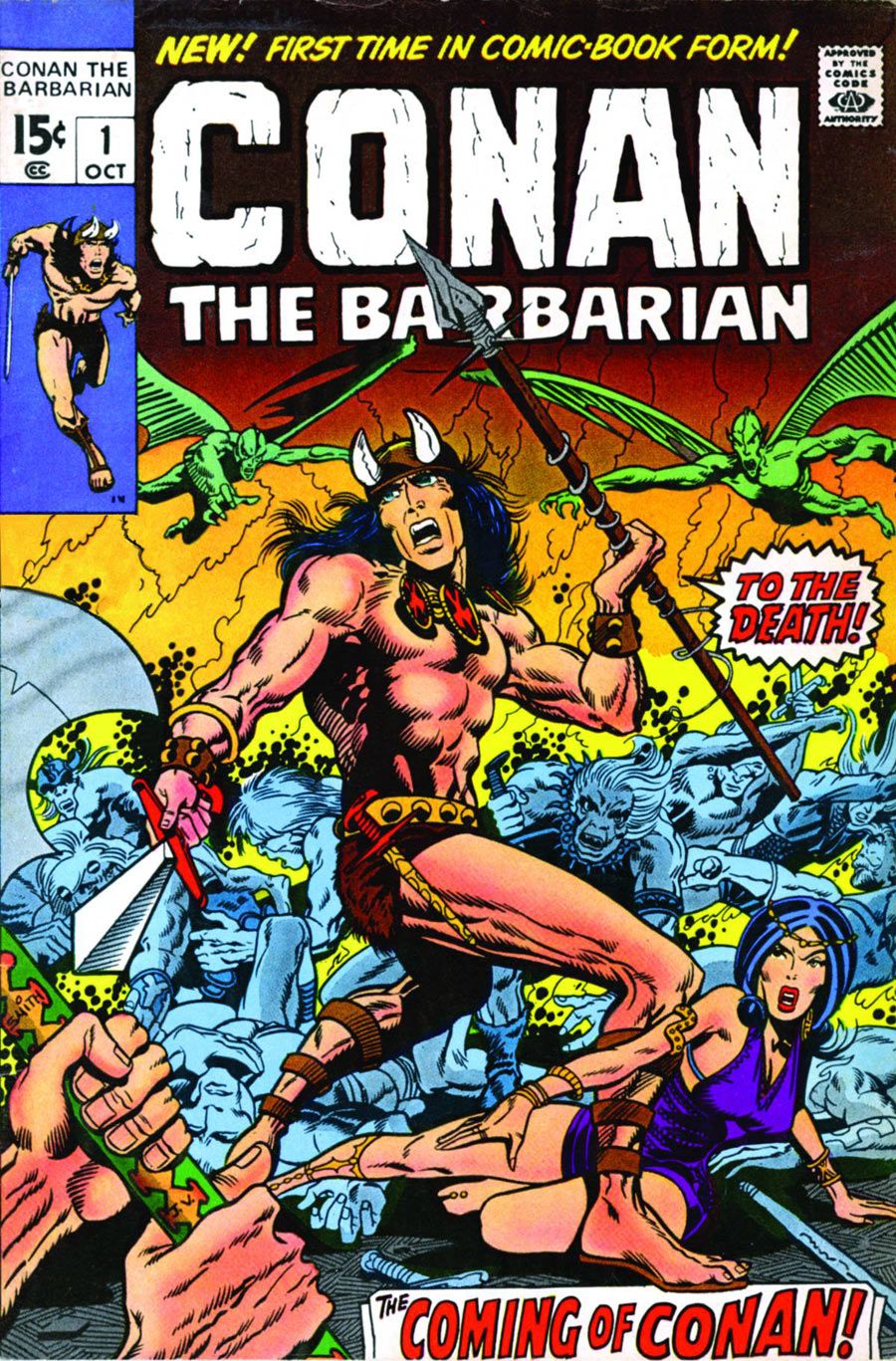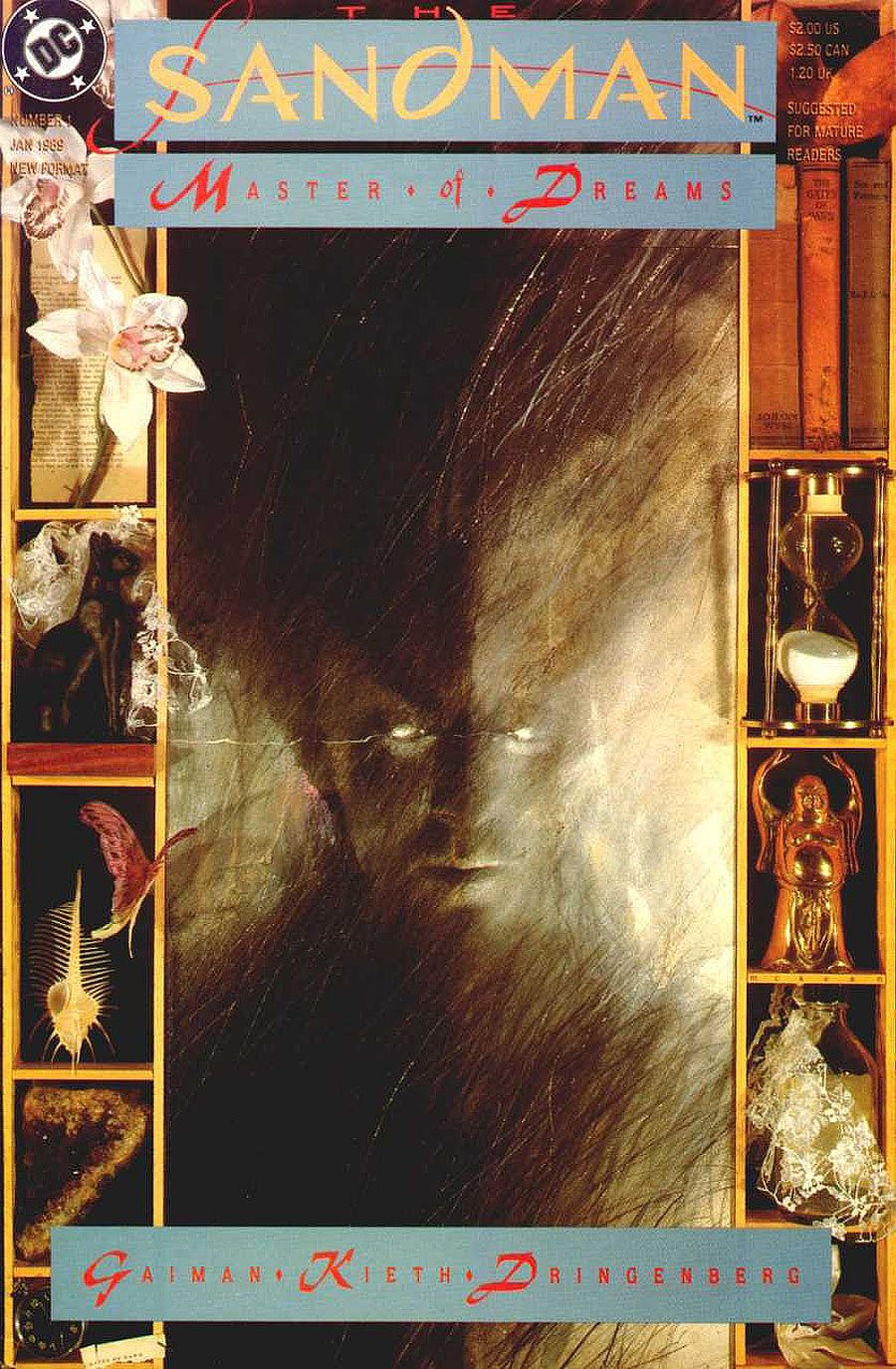Fantasy has been a staple of popular fiction since J.R.R. Tolkien put pen to paper and created a world of Hobbits, Elves, Orcs, and Dwarves. Since the Golden Age, comic book fiction has relied on fantasy for stories that went beyond the super-hero genre. For decades, wizards, warriors, barbarians, sword maidens and the like have thrilled comic fans of all ages. Many companies have mined -- and continue to explore -- the fantasy genre looking for gold and ending up forging legends. From classics like "Conan" making the jump from prose to comics and original titles like "Sandman" and "Fables," there's no shortage of titles to offer readers a fantasy fix.
These are the comics that have broken new ground in graphic fantasy and have endured the test of time. Come now, O Prince. Behold Comic Book Resources' list of the ten best fantasy comic books of all-time!
10. Demon Knights
Created by Paul Cornell and Diogenes Neves (DC Comics, 2011)
When the DC brain trust rebooted their universe, they wisely added an important element of fantasy to the proceedings. "Demon Knights" was set firmly in DC's past, in a time of dragons and knights, magic and chivalry. The book combined successful elements of DC's forays in fantasy from yesteryear with mainstream elements of Wonder Woman's backstory, and combined them with world myth and Arthurian legend to give readers a magical experience in the early days of the New 52. To guide the adventures of DC mainstays Etrigan the Demon, Vandal Savage, Madame Xanadu and the Shining Knight, along with newcomers The Horsewoman, Al Jabr and the Amazon Exoristos, DC turned to writer Paul Cornell.
Cornell combined elements of Tolkien, with a hint of George R.R. Martin and a great deal of DC history to become the guide to one of the standout early New 52 books. "Demon Knights" struck a unique chord with readers. Horsewoman in particular was a compelling choice of characters, a woman who could not walk on her own but who had super powers and abilities while on horseback. Cornell's unique eye for bending genre tropes to allow them to fit into the parameters of a super-hero universe was innovative and exciting. Alas, Camelot fell and so did "Demon Knights" as the dreaded creative differences saw Cornell exit the book after 15 issues with Robert Venditti replacing him. The book lasted through issue #23 before eventually getting the proverbial axe. If DC was wise, they would look into this set of characters again and see if there is a little fire like in the hearth that is "Demon Knights." After all, we hear fantasy is pretty big these days.
9. Kull
Created by Robert E. Howard (1929)
It should come as no surprise that Robert E. Howard is on this list. The sword and sorcery genre owes very much to a select few writers -- Tolkien, Ursula Le Guin, and George R.R., Martin to name a few. Robert E. Howard was the master of weird fiction, strange stories featuring towering protagonists that transcended reality. His characters had their own sense of honor, an indomitable will, and a personal code of ethics that served as their guide in a savage land. Kull was one of Howard's first barbarian characters, predating Conan (in fact, the first Conan story was a rewrite of a Kull story). Kull was Howard's guide in the days before the oceans drank Atlantis, a mighty sword hand and spiritual killer in the early days of the world. Kull was a slave, pirate, gladiator and, eventually, a mighty soldier before finally becoming a king.
When Marvel experienced great success publishing Conan comics, the company turned to Howard's other creation, Kull, to provide fans with more badass barbarism. Brought to Marvel in 1971's "Creatures on the Loose" #10 by Howard scholar Roy Thomas and unparalleled fantasy artist Bernie Wrightson, Kull found a home at Marvel through the '70s and '80s, becoming an ever present part of the company's publishing plans. Kull appeared in frequent backups in Conan's black and white magazines, four volumes of his own solo series, and a short lived black and white magazine called Kull and the Barbarians that featured some insanely primal art and pure Howard-esque storytelling. In a special moment of Bronze Age insanity, Kull even appeared in 1981's "Marvel Team-Up" #112 and sort of met Spider-Man. With the ancient setting where men were still drying themselves off from crawling out of the slime of creation, Kull's stories had a very H.P. Lovecraft feel of ancient monsters and unknowable evils. While physically looking a great deal like Conan, Kull was his own man; one who had to tame a world that was not ready for humanity or civilization. Kull is now published by Dark Horse Comics, who publishes periodic miniseries featuring the adventurer. He might be lesser known than Conan, but Kull is no second banana. He is a classic barbarian who carries the same action and tonality that made the genre so popular.
8. Dungeons and Dragons
Created by Gary Gygax (TSR, 1974)
Ah D&D, just the name evokes countless hours spent with good friends, dice, and junk food. Dungeons and Dragons has been transporting daring players to other worlds of unlimited imagination for decades. But the D&D experience hasn't been limited strictly to tabletops. In 1988, DC Comics began publishing "Dungeons and Dragons" comics, allowing fans to see the worlds of their imagination rendered on a comic's page. DC published a number of titles set in a myriad of D&D worlds including "Advanced Dungeons and Dragons", "Dragonlance," "Forgotten Realms," and "Spelljammer," the last of which is pretty much D&D in space and all kinds of awesome. These books were more than the average product tie-in as many truly great comic talents contributed to these titles. "AD&D" had regular art by the great Jan Duursema with fill-ins by Tom Mandrake. Dan Mishkin and Ron Randall brought comic fans a continuation of the popular "Dragonlance" novels, and the great Rags Morales really arrived at DC working with writer Jeff Grubb on "Forgotten Realms." The books lasted four years, a respectable run for a licensed book at the time, but the most impressive aspect of the books were how true they felt to the game. With stats and character sheets in the back of each issue, the characters, creatures and concepts could be used by D&D payers. The stories themselves were very fun adventure yarns that felt like they stood on their own merits. There was no mistaking that these books were pure D&D, so roll some initiative and get yourself to a back issue bin for some amazing high adventure from an unexpected place. The D&D tradition continues today in comics from IDW Publishing, worthy successors to DC's overlooked line of books.
7. Warlord
Created by Mike Grell (DC Comics, 1975)
In the mid-'70s, DC tried to bank off the success of Marvel's Conan by introducing their own line of fantasy heroes. Most didn't last very long, but there were plenty of cool, original characters and concepts introduced. Claw, Tor, Starfire, Beowulf and the Stalker were all introduced -- and just as quickly disappeared. In the midst of this diverse group of failed characters came the Warlord, and this time, DC had a bonafide fantasy hit on their hands. "Warlord" is the tale of Travis Morgan, a Vietnam vet who gets lost in the primordial world of Skartaris, a world very reminiscent of Edgar Rice Burroughs' lost world of Pellucidar. The book hit all the familiar fantasy tropes as Morgan gained staunch allies, made bitter enemies and hung out with scantily clad princesses as he fought to save his new home, all the while trying to find a way to return to his native Earth. Mike Grell's stunning artwork and portrayal of Morgan made the book successful for years; Grell rendered beautiful women with the same eye for detail as the book's slobbering beasties, and Morgan conquered them both. "Warlord" was a throwback to pulpy fantasies of old, but the concepts and characters endured, and fans can rest assured that the Warlord should fight again someday -- maybe in the New 52.
6. Red Sonja
Created by Robert E. Howard (name), Roy Thomas, and Barry Windsor-Smith (Marvel Comics, 1973)
With "Conan," Marvel visualized the most iconic character in the fantasy literature and created the archetypal barbarian. With Red Sonja," the House of Ideas did it again, they just switched genders. Writer Roy Thomas took the name Red Sonja from Howard's creation Red Sonya of Rogantino, and gave it to his flame haired hellion, Red Sonja of Hyrkania. In doing so, Thomas created the most enduring female fantasy character in comics history. From her chain mail bikini to her scarlet tresses, Red Sonja slashed her way to popularity in the mid-'70s, appearing as a regular back up feature in Conan's black-and white magazine as well as appearing as a frequent guest star in Kull's titles before finally earning her own solo book. Sonja's origin was mature and adult storytelling, her tragic past forming a woman every bit as deadly and capable as Conan and Kull. Sonja was a living weapon, prone to even more violence than some of the other warriors Howard created. Sonja can currently be found kicking ass in books published by Dynamite Entertainment, where a new generation of readers can experience fantasy's deadliest woman.
5. Tellos
Created by Todd Dezago and Mike Wieringo (Image Comics, 1999)
Created by writer Todd Dezago with fabulous art by the late Mike Wieringo, "Tellos" was a breath of fresh air to the comic scene when it premiered in 1999. Coming out of the '90s glut, companies started focusing on high concepts in other genres to break the monotony of predictable, gritty super-hero dramas. "Tellos" was an incredible fantasy series that combined a deep, complex-yet-fun story with whimsical art that set a perfect tone for a light hearted but perfectly crafted fantasy title. The series featured a number of anthropomorphic animal characters such as a half-human, half-tiger named Koj, and a fox thief named Rikk, both of whom teamed with Jak, a human boy who possessed a powerful genie, and a lady pirate named Serra. The group frequently ran afoul of evil frog ninja warriors and an evil boy wizard named Malesur. The book never stopped delighting in its all top brief 10-issue run. Its sense of story combined with its unapologetic joyousness make the book one of the finest examples of comic book high fantasy. The book was one of the high point of Wieringo's stellar career and remains a fitting tribute to the greatly missed artist. Dezago juggled his sense of fun with serious fantasy fare to create something truly special.
4. Fables
Created by Bill Willingham (DC Comics/Vertigo, 2002)
One of the longest running series on shelves today, Fables has been a Vertigo staple for over a decade. Before "Once Upon a Time," "Grimm" and Tim Burton's "Alice in Wonderland," there was "Fables" -- a mash-up of classic fairy tale and fantasy characters in a contemporary setting. Yes, this book can be classified as fantasy, but it also can be viewed as horror, urban fantasy, dark fantasy, science fiction, espionage, romance and pretty much anything else "Fables'" legions of readers can imagine. "Fables" is the fantasy that dared marry the Big Bad Wolf and Snow White; it is the fantasy that made Prince Charming a philandering dirtbag; and it is the fantasy that dared to make Cinderella a Bond-like super spy. There is not a fairy tale that "Fables" does not put its twist on, but the book is not a one note gimmick. The war that tore the Fable world apart is as sweeping and grand as any story in fantasy literature. Over ten years later "Fables" and its second ongoing spinoff series, "Fairest," continue to surprise as familiar archetypes get the "Fables" spin to create a reading experience like no other. Many books, TV shows and movies are doing the modern fairy tale in popular culture, but never forget that Willingham and artists Mark Buckingham, Lan Medina, Steve Leialoha, Craig Hamilton and others did it first.
3. Elfquest
Created by Wendy and Richard Pini (Warp Graphics, 1978)
Sitting firmly in the "How in Tartarus has this not been made into a film" department, our list comes to "Elfquest." Wendy and Richard Pini's "Elfquest" was one of comics' earliest self-publishing success stories, as the creators struck out on their own to create one of the most beautifully crafted, well thought out comic book fantasy epics of all-time. The story is sweeping in scope, combining many eras and events in the world of Two Moons. While Elfquest was an ongoing concern, it was the most daring fantasy epic being published at the time with relatable but fantastic characters guiding readers through a complex world. The Pinis' art and prose are sublime and beautiful to behold, showing that comics can be a place where fantasy can be taken to the next level of artistry. "Elfquest" recently moved to Dark Horse where the 30-plus year saga will finally reach its climax.
2. Conan
Created by Robert E. Howard (1932), first published in comics by Marvel Comics in 1970
The granddaddy of them all. Without Conan there would be no contemporary fantasy. Howard took fantasy out of the magical realms inhabited by fey creatures and added a heaping dose of cold pragmatism. Conan is the archetypal anti-hero, a complex man with great appetites and a greater sense of old world honor. Before his suicide, Robert E. Howard wrote 17 Conan prose stories of various lengths between 1932-1936. Each story was a game changing adventure that took sword and sorcery to new heights of achievement. Howard was a master world builder with an unparalleled imagination. No writer of his age crafted contemporary tales of a primordial world, where old things lurk around every corner, better than Howard. Howard's world was completely untamed and only Conan had a hope of besting it to make way for the age of man. Conan was purely a Howard creation, existing in a world that was part Lovecraft and part real world history, and the great warrior was comfortable in whatever role the story needed him to be, whether it was a young Conan learning the ways of a dangerous world, Conan the Thief, the hero, the soldier, or later, the king. When Marvel brought Conan to comics in 1970, again the character changed the publishing landscape as, all of a sudden, other comic publishers saw fantasy as a viable area of profitability. Marvel published Conan well into the '90s, with the barbarian's adventures usually guided by Roy Thomas, the man who convinced Stan Lee to license the character in the first place. For a time, Conan was arguably as popular as Spider-Man, and was used to launch a line of black-and-white, adult-themed titles for the publisher that featured some of the best artists in graphic fiction. Artistically and creatively, Conan broke new ground with each issue. The comics kept the character in the spotlight and novels and films soon followed. Dark Horse now has the honor of publishing Howard's greatest creation and the character featured in his third feature film in 2011.
1. The Sandman
Created by Neil Gaiman, Sam Kieth and Mike Dringenberg (DC Comics/Vertigo, 1989)
"The Sandman" can be classified as fantasy because, like dreams, "Sandman" can comfortably exist in any genre. Neil Gaiman's masterful tale of the living embodiment of dreaming created a movement of mature dark fantasy that is still fueling non-super-hero comics of today. No two issues of "Sandman" are alike; some very classical fantasy, some contemporary metaphysical urban fantasies, others historical dramas, and even some outliers that are altogether indescribable. "Sandman" set the bar for mature storytelling in fantastical settings. One issue can be a treatise on a forgotten super hero set firmly in the DC Universe, the next, a standalone epic fantasy, and the following story, a soul chilling horror tale. "Sandman's" heartbeat was firmly in the horror genre, but its nervous system was fantasy, with a number of quest-driven narratives that were unlike anything experienced in literature, comics or otherwise. "Sandman" launched the Vertigo line of comics for DC, and ushered Gaiman into the rarified air of comic book legend. It broke new ground, but the genesis of the story could be traced back to fantasy and folk lore, making Sandman the greatest and most daring fantasy comic of all time.
Agree or disagree with our list? Sound off in the forums with your favorites.

